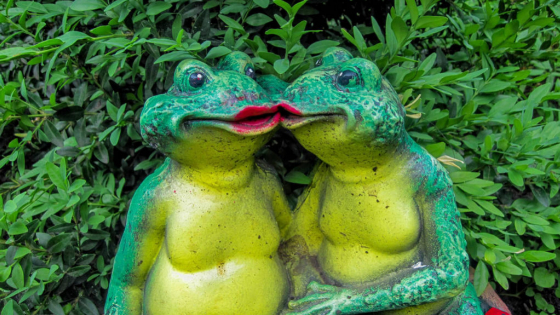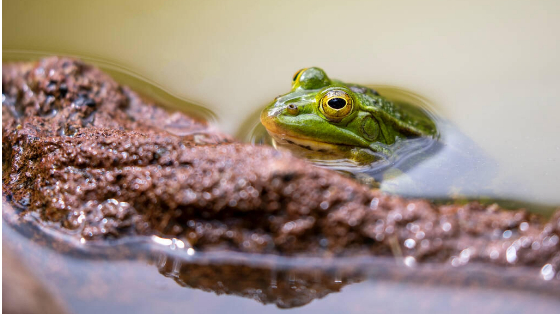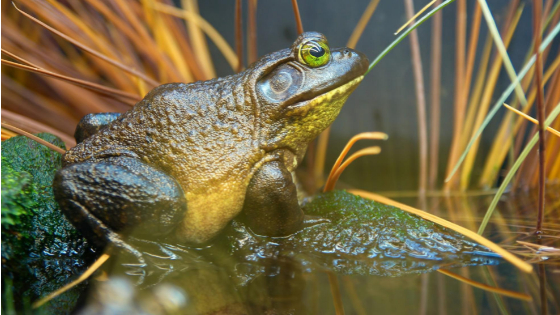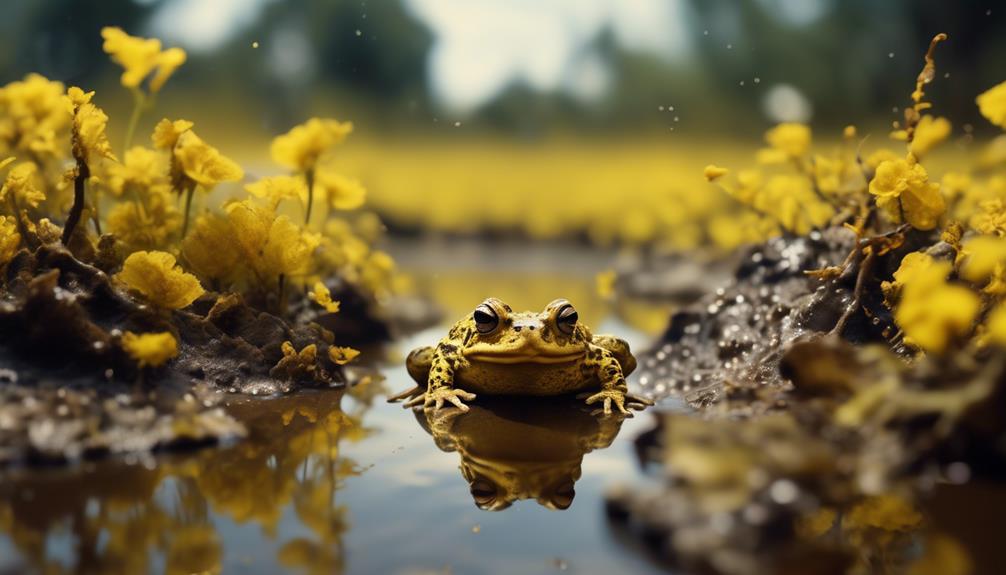
The yellow-bellied toad, Bombina variegata, is a species that is currently grappling with the challenges of survival. Despite its vibrant appearance and unique coloration, this amphibian is facing numerous threats to its existence. From habitat loss to climate change and the spread of diseases, the yellow-bellied toad is fighting against the odds.
In this article, we will explore the conservation efforts being made to protect this endangered species and delve into its fascinating reproductive and life cycle characteristics. Additionally, we will uncover the significance of genetic variation and discuss the role of climate change in its decline.
As we delve deeper into the world of these remarkable creatures, we will discover the strategies being employed to save the yellow-bellied toads from the brink of extinction.
Key Takeaways
- Yellow-bellied toads, specifically the B. variegata species, are facing a decline in population due to various factors including climate change, habitat loss, loss of genetic variation, and disease spread.
- Conservation efforts are needed at local, regional, and continental levels to protect and increase the population of yellow-bellied toads.
- Habitat fragmentation and reduced genetic diversity are impacting the population, making relocation and the establishment of metapopulations necessary for breeding variation.
- The reproductive behavior of yellow-bellied toads includes multiple breeding seasons for females, low reproductive output, and a long lifespan influenced by climate, habitat, and predation risk.
Endangered Status of Yellow-Bellied Toads
The yellow-bellied toads, belonging to the genus Bombina, are currently facing an endangered status due to various threats and declining population trends. These toads, which are distributed mainly across western and eastern Europe, have a bright yellow belly and a dark brown and green dorsal body. When facing a threat, they display crypsis and yellow coloration.
Studies have established eight different forms of B. variegata, representing the ratio of yellow to black markings on the underside. The northern regions have a greater coverage by black markings, while specimens from southern regions have less coverage. However, their habitat and distribution have been significantly impacted, with a decrease in the size of their occupied areas due to habitat disturbances.
Conservation efforts are needed at local, regional, and continental scales to address climate change, habitat loss, loss of genetic variation, and disease spread.
Description and Variation of Yellow-Bellied Toads
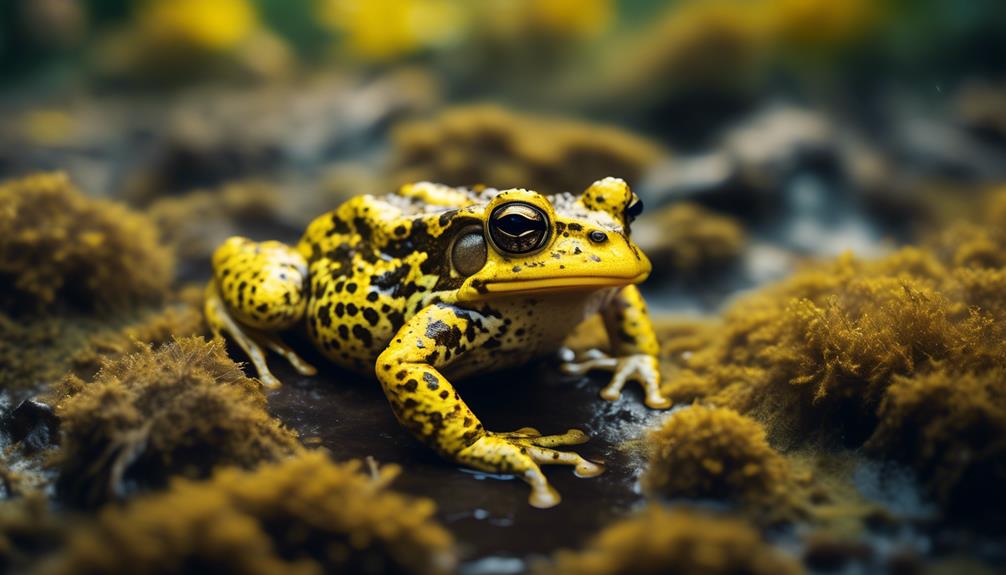
Yellow-bellied toads, belonging to the genus Bombina, exhibit remarkable variation in their physical characteristics and markings. These toads, found mainly in western and eastern Europe, have a bright yellow belly and a dark brown and green dorsal body. When facing a threat, they display crypsis and yellow coloration, blending in with their surroundings.
A study has identified eight different forms of B. variegata, representing the ratio of yellow to black markings on the underside. The northern regions tend to have a greater coverage of black markings, while specimens from southern regions have less coverage. This variation in markings adds to the uniqueness of each individual toad and highlights the diversity within the species.
Habitat and Distribution of Yellow-Bellied Toads
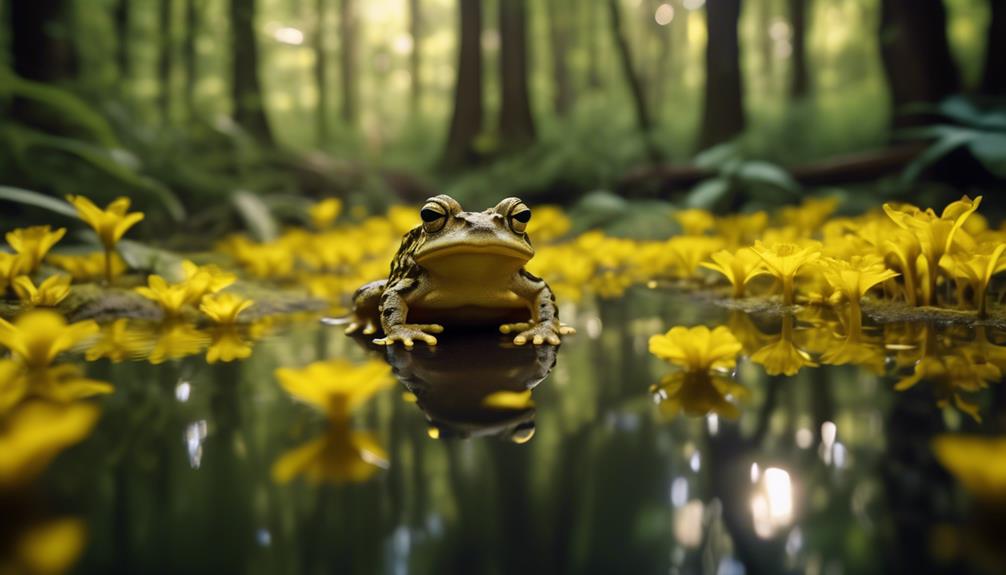
Yellow-Bellied Toads can be found in mountainous regions across Western Europe and are known for their distinctive physical characteristics.
- They inhabit lush green valleys surrounded by towering snow-capped peaks, creating a picturesque image of their natural habitat.
- These toads can be seen hopping across moss-covered rocks, blending seamlessly with the vibrant colors of their surroundings.
- They seek refuge in crystal-clear mountain streams, their yellow bellies contrasting against the cool, rushing water.
These unique amphibians have adapted to their specific habitat, utilizing their colors and patterns to camouflage and protect themselves. The mountainous regions of Western Europe provide the ideal environment for the survival of these endangered yellow-bellied toads, but their declining population highlights the urgent need for conservation efforts to protect their precious habitat.
Conservation Efforts for Yellow-Bellied Toads

Efforts to conserve the yellow-bellied toad’s population have become a critical priority due to its declining numbers and the threats it faces in its mountainous habitat.
Conservation efforts are necessary to address the various factors contributing to the decline, including climate change, habitat loss, loss of genetic variation, and disease spread.
These efforts need to be implemented at local, regional, and continental scales to effectively protect the species.
Habitat fragmentation and reduced genetic diversity have also impacted the population, making it imperative to establish metapopulations for breeding variation.
In Germany, the yellow-bellied toad is considered endangered, and attempts to increase the population have been made through relocation. However, the spread of disease is a concern in such cases.
Reproduction and Life Cycle of Yellow-Bellied Toads
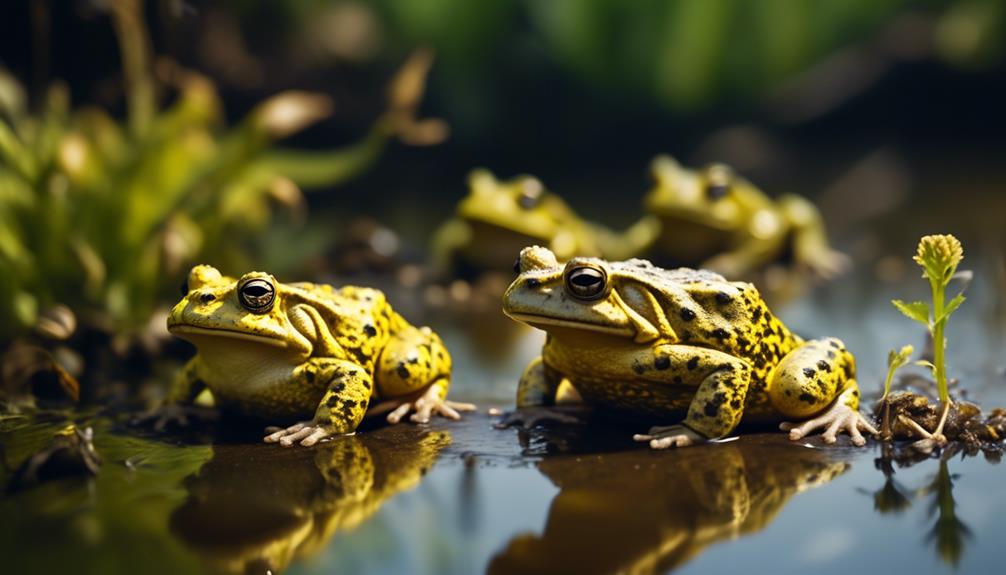
The reproduction and life cycle of yellow-bellied toads involve unique characteristics and behaviors that contribute to their survival in their mountainous habitats.
- Females can produce offspring multiple times per mating season, ensuring a higher chance of successful reproduction.
- Yellow-bellied toads prefer to lay their eggs in warm ponds, where the eggs can develop healthily.
- The duration of the pond is crucial for site selection, as pond desiccation poses a greater risk than predation.
These aspects of the yellow-bellied toads’ reproductive strategy highlight their adaptability and resilience.
By maximizing their reproductive output and selecting suitable breeding sites, they increase the chances of their offspring’s survival.
These behaviors contribute to the overall population viability of yellow-bellied toads in their mountainous habitats.
Protective Coloration and Behavior of Yellow-Bellied Toads
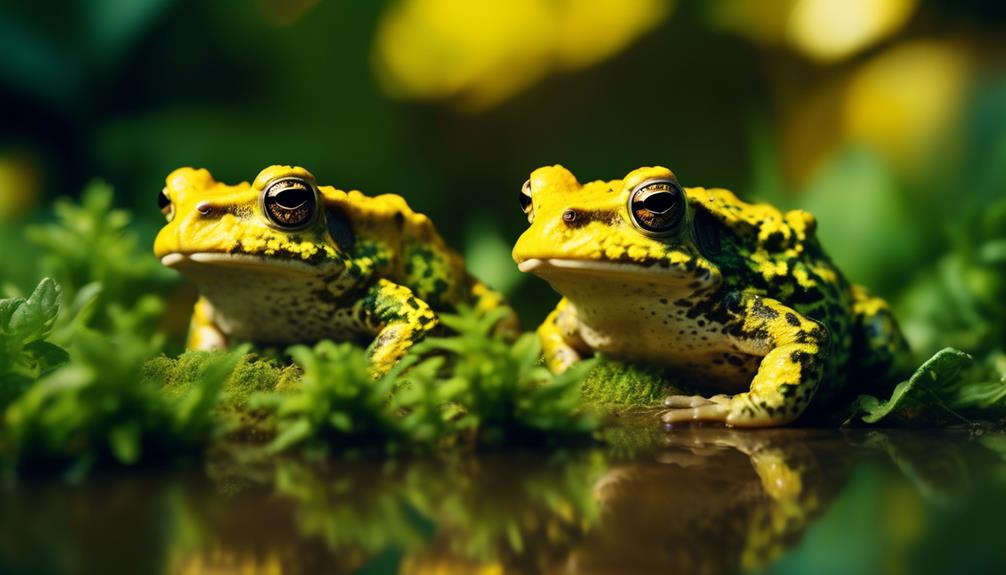
Building on the reproductive strategies of yellow-bellied toads, their protective coloration and behavior play a crucial role in their survival in their mountainous habitats. Yellow-bellied toads display a darker dorsal coloration, which helps them blend in with their surroundings for camouflage. However, they also exhibit aposematism with their bright yellow ventral coloration, serving as a warning signal to potential predators. Interestingly, these toads have the ability to alter their coloration to match their environment, thanks to the movement of melanosomes within their skin cells. Additionally, yellow-bellied toads have warts on their dorsal side that can release venom when they feel threatened. These adaptations not only help them avoid predation but also aid in their overall survival in their vulnerable habitats.
| Protective Coloration and Behavior |
|---|
| – Dark dorsal coloration for camouflage |
| – Bright yellow ventral coloration as a warning signal |
| – Ability to alter coloration to match environment |
| – Warts on dorsal side releasing venom when threatened |
Threats to the Survival of Yellow-Bellied Toads
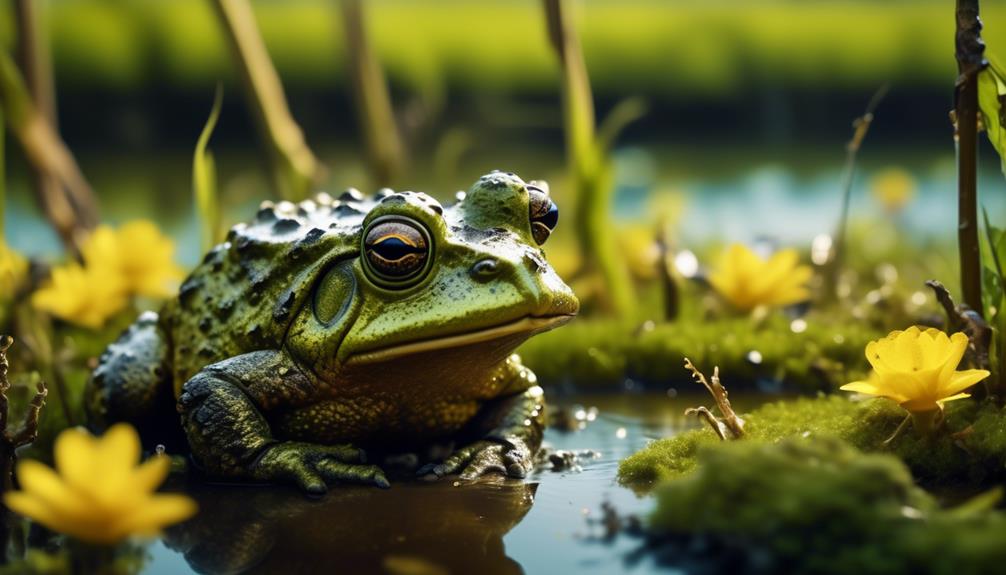
Yellow-bellied toads face numerous threats that jeopardize their survival in their mountainous habitats. These threats include:
- Habitat loss: Deforestation and urbanization lead to the destruction of their natural habitats, reducing their available living space and food sources.
- Pollution: Chemical pollution from industrial activities and agricultural runoff contaminates the water bodies where the toads breed and live, adversely affecting their health and reproductive success.
- Climate change: Rising temperatures and changing weather patterns disrupt the toads’ breeding cycles and alter their habitat conditions, making it difficult for them to find suitable breeding sites and food resources. Additionally, extreme weather events such as droughts and floods can directly impact their survival.
These threats, combined with others such as predation and disease, pose significant challenges to the survival of yellow-bellied toads. Urgent conservation efforts are needed to protect their populations.
Importance of Genetic Variation in Yellow-Bellied Toads
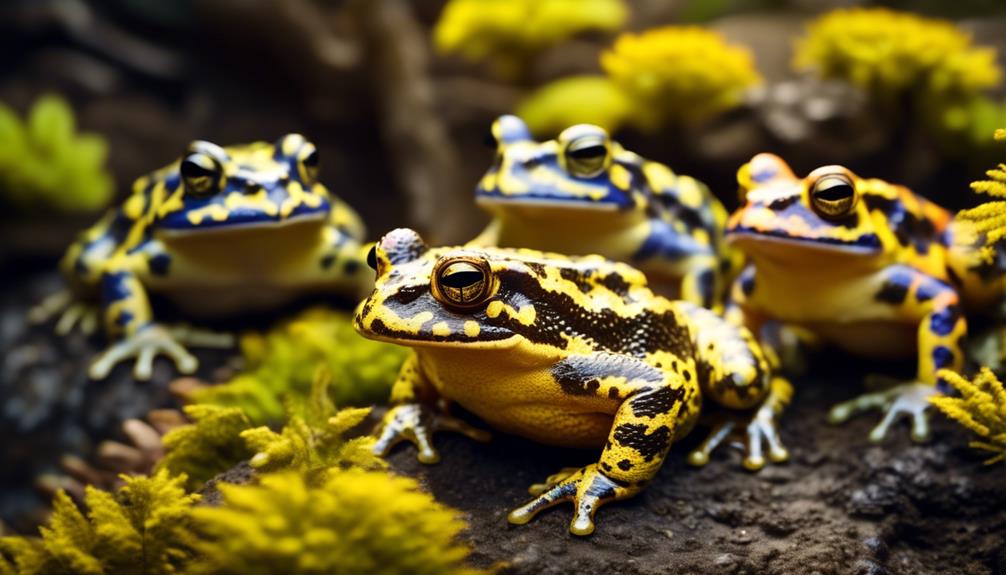
The survival of yellow-bellied toads in their mountainous habitats is intricately tied to the importance of maintaining genetic variation within their populations. Genetic variation is crucial for the long-term viability and adaptability of a species.
It allows individuals to possess different traits and characteristics that may be advantageous in a changing environment. In the case of yellow-bellied toads, genetic variation plays a vital role in their ability to withstand threats such as habitat loss, climate change, and disease spread. It provides them with the potential to adapt and evolve in response to these challenges.
Without sufficient genetic variation, yellow-bellied toads may become more susceptible to extinction, as they would lack the necessary genetic diversity to cope with changing conditions. Therefore, efforts to conserve this species must prioritize the preservation of genetic variation within their populations.
Role of Climate Change in the Decline of Yellow-Bellied Toads
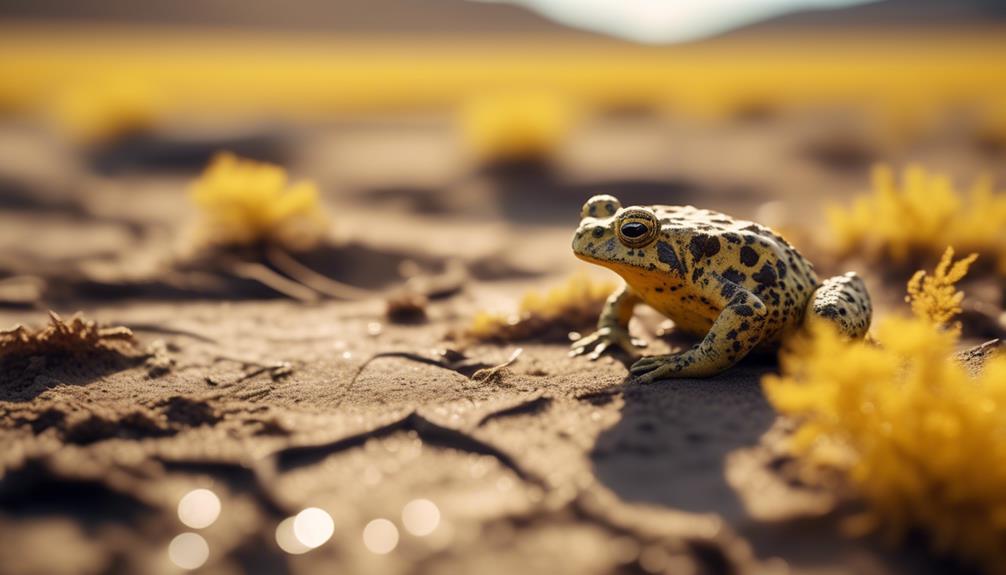
Climate change has emerged as a significant contributing factor to the decline of yellow-bellied toads. This phenomenon has led to several detrimental effects on the species’ population and habitat. Here are three key ways in which climate change has impacted the yellow-bellied toads:
- Increased temperature: Rising global temperatures have altered the toads’ breeding patterns, as they rely on specific temperature conditions for successful reproduction. Warmer temperatures can disrupt the timing of breeding, leading to mismatches with optimal breeding habitats.
- Changes in precipitation patterns: Climate change has also resulted in erratic rainfall patterns, leading to the drying up of breeding ponds. This poses a significant threat to the survival of yellow-bellied toads, as they require stable water bodies for their offspring to develop.
- Habitat loss and fragmentation: Climate change-induced habitat loss, such as the melting of glaciers and shrinking of wetlands, has reduced the available suitable habitats for yellow-bellied toads. This loss, combined with fragmented landscapes, hinders the species’ ability to disperse and find new breeding sites.
The combined impact of these climate change-related factors has placed the yellow-bellied toads at a higher risk of decline and extinction. Urgent conservation efforts are necessary to mitigate these threats and ensure the survival of this vulnerable species.
Strategies to Save Yellow-Bellied Toads From Extinction
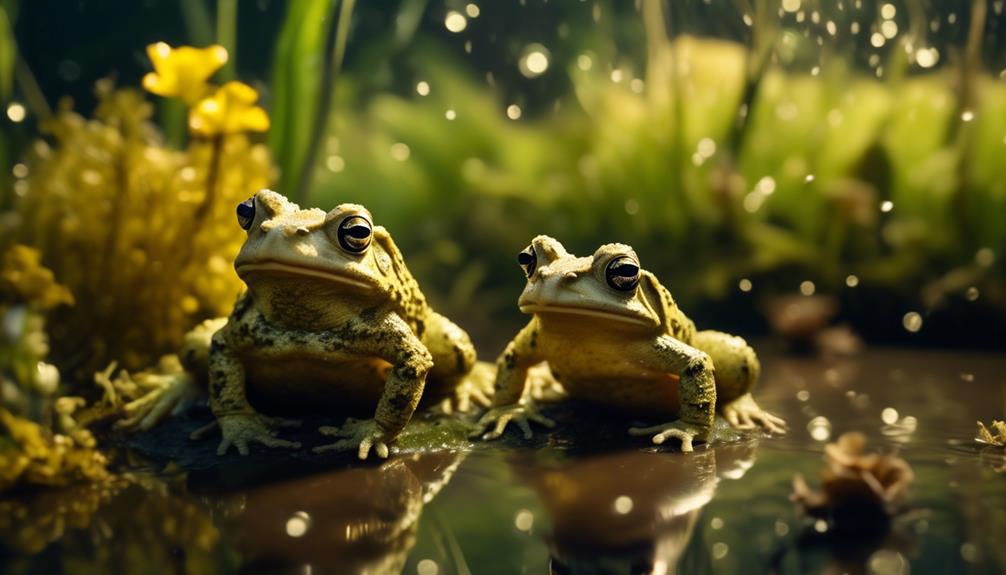
To ensure the survival of yellow-bellied toads and prevent their extinction, various strategies must be implemented. These strategies should focus on addressing the main threats to their population, such as habitat loss, climate change, loss of genetic variation, and disease spread.
At the local level, efforts should be made to protect and restore their natural habitats, including the creation of suitable breeding ponds and the preservation of their preferred warm ponds.
Regionally, measures should be taken to address habitat fragmentation and promote genetic diversity through the establishment of metapopulations.
At the continental scale, collaboration is needed to implement conservation programs and share best practices for the management of yellow-bellied toad populations.
It is crucial to act swiftly and effectively to save these endangered amphibians from extinction.
Frequently Asked Questions
What Is the Average Lifespan of a Yellow-Bellied Toad?
The average lifespan of a yellow-bellied toad can range from 5 to 23 years, depending on factors such as climate, habitat, and predation risk. Adult survival rates and reproductive output also influence their longevity.
How Do Yellow-Bellied Toads Alter Their Coloration to Match Their Environment?
Yellow-bellied toads alter their coloration to match their environment through the movement of melanosomes, allowing rapid color change. This adaptive behavior helps them camouflage with darker dorsal coloration and display aposematism with yellow ventral coloration as a warning signal.
What Is the Significance of Genetic Variation in Yellow-Bellied Toads?
Genetic variation in yellow-bellied toads is significant for their survival and adaptation to changing environments. It allows for the development of beneficial traits, enhances resistance to diseases, and promotes population resilience in the face of habitat loss and climate change.
How Do Yellow-Bellied Toads Defend Themselves When Threatened?
Yellow-bellied toads defend themselves when threatened through protective coloration and behavior. They exhibit aposematism with their yellow ventral coloration, while their darker dorsal coloration provides camouflage. They can also release venom from warts on their dorsal side.
What Are the Main Threats to the Survival of Yellow-Bellied Toads?
The main threats to the survival of yellow-bellied toads include climate change, habitat loss, loss of genetic variation, and the spread of diseases. Conservation efforts are needed at various scales to address these challenges and protect the species.
What Threats Are Causing Multiple Species of Toads to Become Endangered?
The endangered natterjack toad survival is threatened by various factors including habitat destruction, pollution, and climate change. Loss of breeding ponds and wetlands, as well as fungal diseases and predation, also contribute to the decline of natterjack toad populations. Conservation efforts are crucial to prevent their extinction.
Conclusion
In conclusion, the yellow-bellied toad, Bombina variegata, is an endangered species facing numerous challenges to its survival. Conservation efforts are being made to protect this amphibian, and its unique reproductive and life cycle characteristics are being studied.
The toad’s protective coloration and behavior allow it to adapt to its surroundings. However, the yellow-bellied toad’s population is declining due to factors such as habitat loss, loss of genetic variation, and the spread of diseases.
Urgent action is needed to save this species from extinction.

